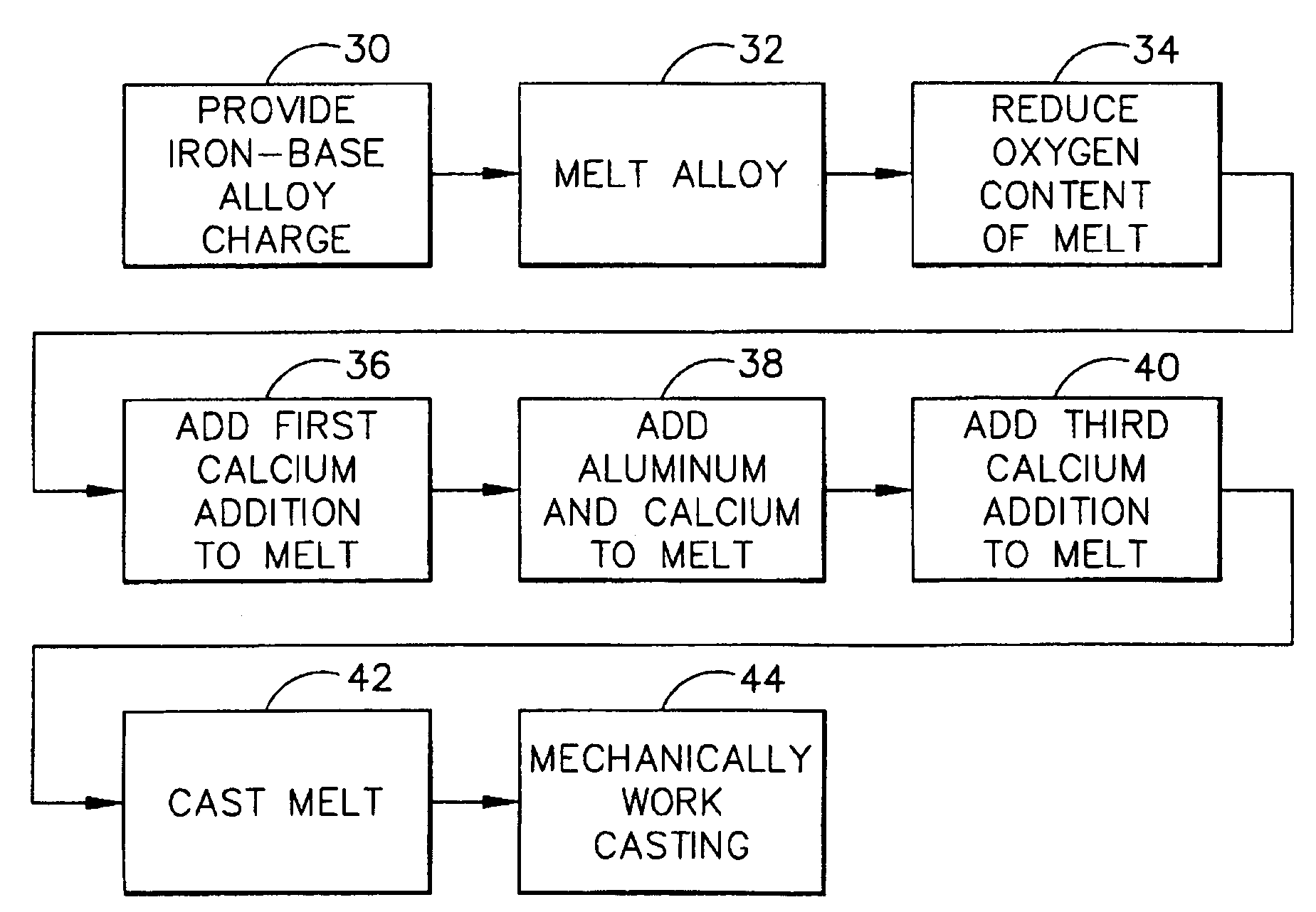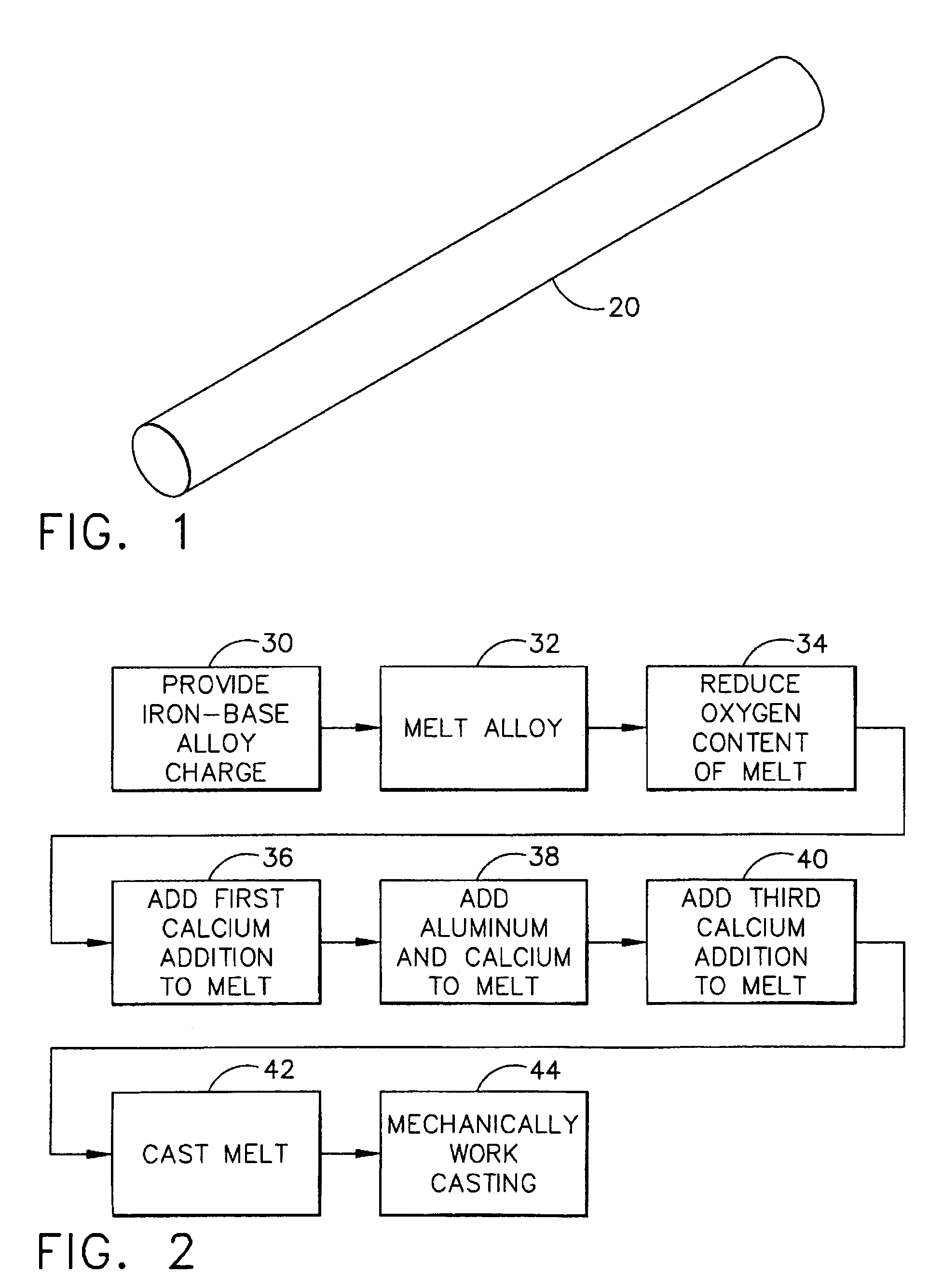Fabrication of a high-strength steel article with inclusion control during melting
a technology of inclusion control and high-strength steel, which is applied in the direction of photomechanical exposure apparatus, electronic circuit testing, and test/measurement of semiconductor/solid-state devices, etc., can solve the problems of compromise the low-cycle fatigue performance of steel articles, and achieve the reduction of free oxygen available, the effect of reducing the inclusion problem and significantly reducing the calcium conten
- Summary
- Abstract
- Description
- Claims
- Application Information
AI Technical Summary
Benefits of technology
Problems solved by technology
Method used
Image
Examples
Embodiment Construction
[0023]FIG. 1 depicts an example of a steel article 20 that may be made by the approach of the invention. The article 20 is preferably a shaft used in a gas turbine engine. The use of the invention is not limited to this article, however.
[0024]FIG. 2 illustrates in block diagram form a preferred approach for practicing the invention. An iron-base alloy is provided, numeral 30. The iron-base alloy has more iron than any other element. The iron-base alloy has aluminum present in a relatively small amount, less than about 0.5 weight percent and preferably less than about 0.1 weight percent. Other elements are typically present. In a preferred form, the iron-base alloy has from about 10 to about 18 weight percent nickel, from about 8 to about 16 weight percent cobalt, from about 1 to about 5 weight percent molybdenum, less than about 0.5 weight percent aluminum, and from about 1 to about 3 weight percent chromium. Carbon is ordinarily present in the initially provided iron-base alloy in ...
PUM
| Property | Measurement | Unit |
|---|---|---|
| weight percent | aaaaa | aaaaa |
| weight percent | aaaaa | aaaaa |
| weight percent | aaaaa | aaaaa |
Abstract
Description
Claims
Application Information
 Login to View More
Login to View More - R&D
- Intellectual Property
- Life Sciences
- Materials
- Tech Scout
- Unparalleled Data Quality
- Higher Quality Content
- 60% Fewer Hallucinations
Browse by: Latest US Patents, China's latest patents, Technical Efficacy Thesaurus, Application Domain, Technology Topic, Popular Technical Reports.
© 2025 PatSnap. All rights reserved.Legal|Privacy policy|Modern Slavery Act Transparency Statement|Sitemap|About US| Contact US: help@patsnap.com



